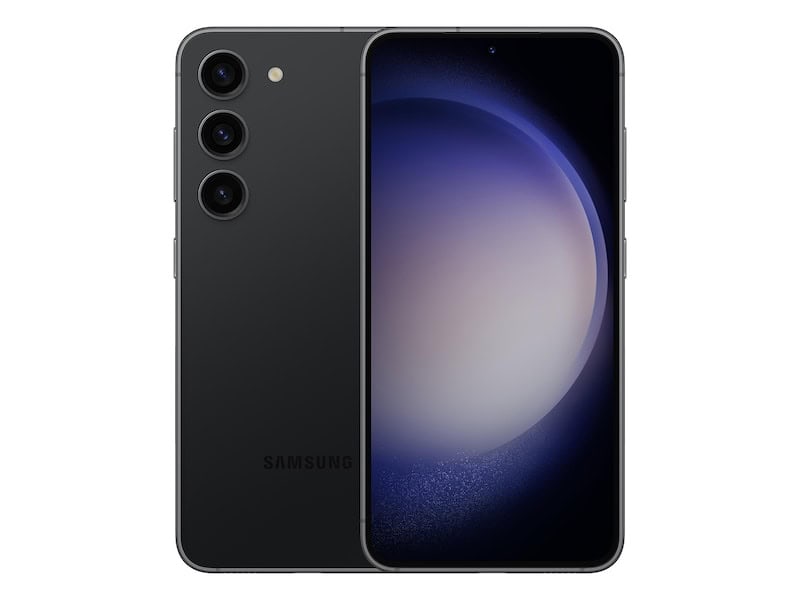Since 2010, the Samsung Galaxy S series has been a leader in mobile technology, constantly improving its smartphones to meet the needs of users. The series started with the original Samsung Galaxy S and has since made significant advancements in design, display, technical specifications, and features. Each new release aims to offer better performance and a more user-friendly experience, catering to the evolving demands of consumers and technological advancements.
Samsung Galaxy S Release History
| Model Name | Release Date (approx.) | Display Size | Processor | Rear Camera (Main Sensor) |
|---|---|---|---|---|
| Samsung Galaxy S | June 2010 | 4.0 inches Super AMOLED | Samsung Hummingbird (1GHz) | 5 MP |
| Samsung Galaxy S II | May 2011 | 4.3 inches Super AMOLED Plus | Exynos 4 Dual (1.2GHz) | 8 MP |
| Samsung Galaxy S III | May 2012 | 4.8 inches HD Super AMOLED | Exynos 4 Quad (1.4GHz) | 8 MP |
| Samsung Galaxy S4 | April 2013 | 5.0 inches Full HD Super AMOLED | Snapdragon 600 (1.9GHz) / Exynos 5 Octa (1.6GHz) | 13 MP |
| Samsung Galaxy S5 | April 2014 | 5.1 inches Full HD Super AMOLED | Snapdragon 801 (2.5GHz) | 16 MP |
| Samsung Galaxy S6 / S6 Edge | April 2015 | 5.1 inches Quad HD Super AMOLED | Exynos 7 Octa (2.1GHz) | 16 MP |
| Samsung Galaxy S7 / S7 Edge | March 2016 | 5.1 / 5.5 inches Quad HD Super AMOLED | Snapdragon 820 (2.15GHz) / Exynos 8 Octa (2.3GHz) | 12 MP (Dual Pixel) |
| Samsung Galaxy S8 / S8+ | April 2017 | 5.8 / 6.2 inches Quad HD+ Super AMOLED | Snapdragon 835 (2.35GHz) / Exynos 9 Octa (2.3GHz) | 12 MP (Dual Pixel) |
| Samsung Galaxy S9 / S9+ | March 2018 | 5.8 / 6.2 inches Quad HD+ Super AMOLED | Snapdragon 845 (2.8GHz) / Exynos 9 Octa (2.7GHz) | 12 MP (Dual Aperture) / Dual 12MP |
| Samsung Galaxy S10 / S10+ / S10e | March 2019 | 6.1 / 6.4 / 5.8 inches Dynamic AMOLED | Snapdragon 855 (2.84GHz) / Exynos 9 Octa (2.73GHz) | Triple Rear Cameras |
| Samsung Galaxy S20 / S20+ / S20 Ultra | March 2020 | 6.2 / 6.7 / 6.9 inches Dynamic AMOLED 2X | Snapdragon 865 (2.84GHz) / Exynos 990 (2.73GHz) | Triple/Quad Rear Cameras (108MP main on Ultra) |
| Samsung Galaxy S21 / S21+ / S21 Ultra | January 2021 | 6.2 / 6.7 / 6.8 inches Dynamic AMOLED 2X | Snapdragon 888 (2.84GHz) / Exynos 2100 (2.9GHz) | Triple/Quad Rear Cameras (108MP main on Ultra) |
| Samsung Galaxy S22 / S22+ / S22 Ultra | February 2022 | 6.1 / 6.6 / 6.8 inches Dynamic AMOLED 2X | Snapdragon 8 Gen 1 (3.0GHz) / Exynos 2200 (2.8GHz) | Triple/Quad Rear Cameras (108MP main on Ultra) |
| Samsung Galaxy S23 / S23+ / S23 Ultra | February 2023 | 6.1 / 6.6 / 6.8 inches Dynamic AMOLED 2X | Snapdragon 8 Gen 2 (3.36GHz) | Triple/Quad Rear Cameras (200MP main on Ultra) |
| Samsung Galaxy S24 / S24+ / S24 Ultra | January 2024 | 6.1 / 6.6 / 6.8 inches (approx) Dynamic AMOLED 2X | Snapdragon 8 Gen 3 | Quad Lens Rear Cameras with upgraded sensors |

Notes:
- Processor: Model availability can vary by region.
- Camera: This focuses on the main rear sensor; additional lenses and features evolve over time.
- Other Specs: Battery capacity, RAM, storage, design, and other features also change regularly but are omitted for space reasons.
Key Takeaways
- The Samsung Galaxy S series is a flagship smartphone series that has evolved significantly since 2010.
- Design and display improvements reflect the series’ adaptability to consumer preferences and technological advancements.
- Incremental updates in specifications and features demonstrate Samsung’s commitment to innovation in the smartphone market.
Evolution of Galaxy S Design and Display
The design and display of the Galaxy S series have seen significant transformation since its inception. Each iteration has brought forward notable enhancements, shaping the devices into the modern examples of smartphone technology they are today.
Initial Designs and Displays
The original Galaxy S, launched in 2010, featured a 4-inch Super AMOLED display which was large for its time. The emphasis was on vivid colors and deep blacks, a characteristic quality of Super AMOLED technology. The design was predominantly plastic with noticeable bezels around the screen.
Advancements in Display Technology
Over the years, Samsung has persistently improved the Super AMOLED display. By the time the Galaxy S4 and S5 came around, the company had made significant strides, increasing screen size and resolution while narrowing the bezels for a more immersive viewing experience. These models also introduced improved Amoled display technologies that offered better color reproduction and energy efficiency.
Design Innovations and Materials
With the launch of the Galaxy S6, Samsung took a bold step away from plastic, adopting a premium glass back design. The Galaxy S6 Edge introduced dual-edge displays, showcasing the company’s ability to innovate the smartphone’s physical form factor. These design choices were not only aesthetic but also functional, as they allowed for the inclusion of new technologies like wireless charging.
Integration of Hardware Features
Each new Galaxy S model has seen a tighter integration of hardware features with its design. The Galaxy S series has included IP ratings for water and dust resistance, heart rate monitors, and fingerprint scanners. Notably, the Galaxy S10 marked the debut of the Ultrasonic Fingerprint Sensor beneath the display. Later, the Galaxy S20 Ultra and Galaxy S23 Ultra would feature expansive displays with minimal bezels, incorporating an impressive amount of technology into a sleek and sophisticated design.
Technical Specifications and Features
Samsung Galaxy S Series smartphones have continuously evolved their technical specifications and features. From performance upgrades to enhanced camera systems, these devices are designed to deliver a powerful and seamless user experience.
Performance Enhancements
The Galaxy S series has seen significant upgrades in performance. Samsung equips these devices with top-tier chipsets, such as the Snapdragon 801 in the Galaxy S5. Each new release typically sees an improvement in the CPU and GPU capabilities, leading to faster and more efficient phones. Starting with the initial models that came with single-core processors, the series has progressed to boast multi-core CPUs. Memory capacity has also expanded, with the latest models featuring large RAM and internal storage options to support multi-tasking and extensive app usage.
Camera and Battery Improvements
Quality and innovation in camera technology are trademarks of the Galaxy S series. Early models like the Galaxy S2 and S3 introduced impressive rear camera capabilities for their time, and this trend has continued. Modern entries in the series boast multiple camera setups with high-resolution sensors, wide aperture settings for better low-light performance, and advanced features such as optical image stabilization. The Galaxy S20 series, in particular, represents a major leap with features like 100X zoom.
As for batteries, Samsung has significantly increased battery life across the series. Devices now feature batteries with capacities that support heavy usage throughout the day. For instance, the Galaxy S5 was notable for its 2,800mAh battery, which was large at the time of its release.
Software and Ecosystem
Samsung’s Galaxy S series runs on the Android operating system, with early models starting on Android 2.1 and seeing regular updates since. Each new iteration of the Galaxy S comes with the latest version of Android at the time of release, as well as Samsung’s custom user interfaces. Over the years, TouchWiz evolved into One UI, enhancing user experience with each update. Features like Bixby, Samsung Pay, and S Voice are integrated to provide a cohesive ecosystem. Samsung also ensures that its devices support a range of additional services and accessories, solidifying its Galaxy S series as a cornerstone of the Android market.
Frequently Asked Questions
The Samsung Galaxy S series has seen numerous releases since its inception, evolving significantly over time. Each model has brought new features and advancements, helping to set new standards for smartphones.
What are the release dates of each Samsung Galaxy S model?
The original Samsung Galaxy S was launched in March 2010. Subsequent models have typically been released on an annual basis. The Galaxy S23 Ultra, the 14th iteration in the series, was unveiled in 2023.
How does the Samsung Galaxy S series evolve with each new release?
With each new release, the Galaxy S series has introduced improvements in processing power, camera technology, display quality, and battery life. New features such as water resistance and biometric security have also been added over time.
Which Samsung Galaxy S model introduced major upgrades over its predecessor?
Major upgrades can be seen with the transition from the Galaxy S10 series to the Galaxy S20 series, when Samsung introduced 5G support, high-refresh-rate displays and significantly improved camera capabilities.
What features differentiate the Samsung Galaxy S series from the A series?
The Galaxy S series is Samsung’s premium line and is known for its higher-end specs, such as more powerful processors, better camera systems, and superior screen technology compared to the more budget-friendly Galaxy A series.
When was the first Samsung Galaxy S smartphone launched?
Samsung introduced the first Galaxy S smartphone in March of 2010, bringing a new level of innovation to Android-based smartphones.
What are the distinguishing characteristics of the latest Samsung Galaxy S model?
The latest Samsung Galaxy S model, as of 2024, is the Galaxy S24 Ultra. It distinguishes itself with top-of-the-line specs including a high-resolution camera system, advanced Qualcomm Snapdragon processor, and enhanced display technology for better visuals.







